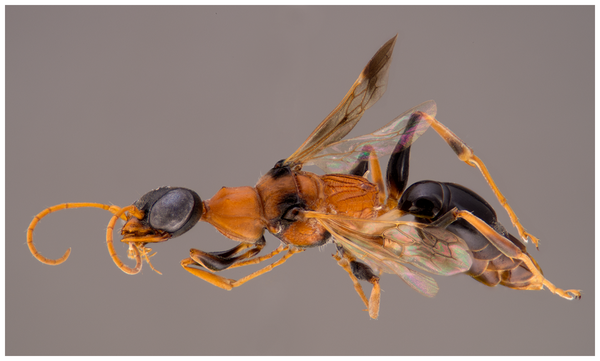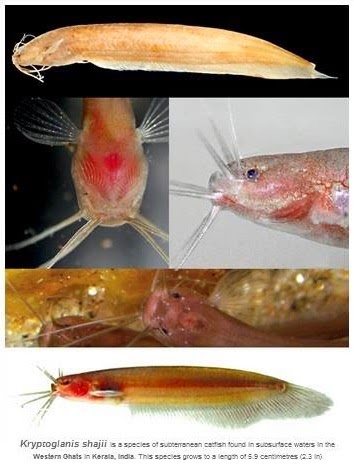 |
FIGURE 7. Variation of carapace morphology in western (A; UF 21746), central (B; UF 52676), and Suwannee (C; UF 57967) lineages of Macrochelys. Most of the gross variation in post-cranial morphology is present within the caudal region of the carapace.
Macrochelys temminckii | M. apalachicolae | M. suwanniensis |
Abstract
The Alligator Snapping Turtle, Macrochelys temminckii, is a large, aquatic turtle limited to river systems that drain into the Gulf of Mexico. Previous molecular analyses using both mitochondrial and nuclear DNA suggested that Macrochelys exhibits significant genetic variation across its range that includes three distinct genetic assemblages (western, central, and eastern = Suwannee). However, no taxonomic revision or morphological analyses have been conducted previously. In this study, we test previous hypotheses of distinct geographic assemblages by examining morphology, reanalyzing phylogeographic genetic structure, and estimating divergence dating among lineages in a coalescent framework using Bayesian inference. We reviewed the fossil record and discuss phylogeographic and taxonomic implications of the existence of three distinct evolutionary lineages. We measured cranial (n=145) and post-cranial (n=104) material on field-captured individuals and museum specimens. We analyzed 420 base pairs (bp) of mitochondrial DNA sequence data for 158 Macrochelys. We examined fossil Macrochelys from ca. 15–16 million years ago (Ma) to the present to better assess historical distributions and evaluate named fossil taxa. The morphological and molecular data both indicate significant geographical variation and suggest three species-level breaks among genetic lineages that correspond to previously hypothesized genetic assemblages. The holotype of Macrochelys temminckii is from the western lineage. Therefore, we describe two new species as Macrochelys apalachicolae sp. nov. from the central lineage and Macrochelys suwanniensis sp. nov. from the eastern lineage (Suwannee River drainage).
Our estimates of divergence times suggest that the most recent common ancestor (MRCA) of M. temminckii (western) and M. apalachicolae (central) existed 3.2–8.9 Ma during the late Miocene to late Pliocene, whereas M. temminckii-M. apalachicolae and M. suwanniensis last shared a MRCA 5.5–13.4 Ma during the mid-Miocene to early Pliocene. Examination of fossil material revealed that the fossil taxon M. floridana is actually a large Chelydra. Our taxonomic revision of Macrochelys has conservation and management implications in Florida, Georgia, and Alabama.
Keywords: Macrochelys, Chelydridae, Morphology, Conservation, Fossil, Genetics, Phylogeography, Suwannee River, Apalachicola River
 |
| FIGURE 1. Map of sampling localities of Macrochelys used for morphological analyses. Multiple specimens were often collected from the same localities. |
Macrochelys apalachicolae sp. nov.
Apalachicola Alligator Snapping Turtle
Distribution. Restricted to river drainages bounded by the Choctawhatchee and Ochlockonee rivers in Florida, Georgia, and Alabama.
Etymology. Specific epithet refers to the new Latin apalachicol– (referring to the Apalachicola River) and the Latin –ae (treating the name of the river as a Latin cognate in the First Declension, genitive case), combined to form the composite noun apalachicolae.
Macrochelys suwanniensis sp. nov.
Suwannee Alligator Snapping Turtle
Distribution. Restricted to the Suwannee River drainage in Florida and Georgia.
Etymology. Specific epithet refers to combination of the new Latin suwanni– (referring to the Suwannee River) and the Latin –ensis (belongs to the) to form the composite noun suwanniensis.
Thomas, Travis M., Michael C. Granatosky, Jason R. Bourque, Kenneth L. Krysko, Paul E. Moler, Tony Gamble, Eric Suarez, Erin Leone, Kevin M. Enge & Joe Roman. 2014. Taxonomic Assessment of Alligator Snapping Turtles (Chelydridae:
Macrochelys), with the description of two new species from the southeastern United States.
Zootaxa. 3786(2): 141–165.
Extremely rare Texas dino turtle even more endangered than first thought





































